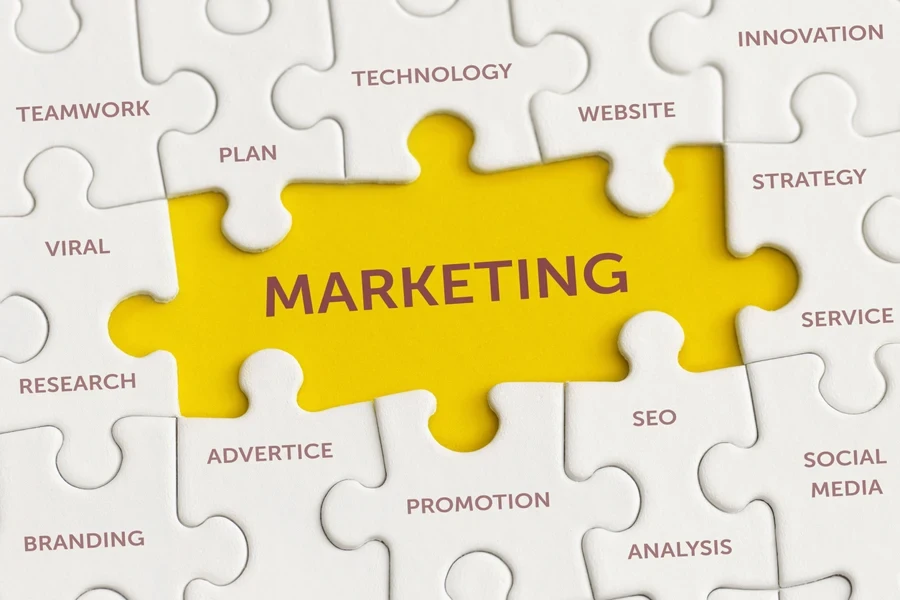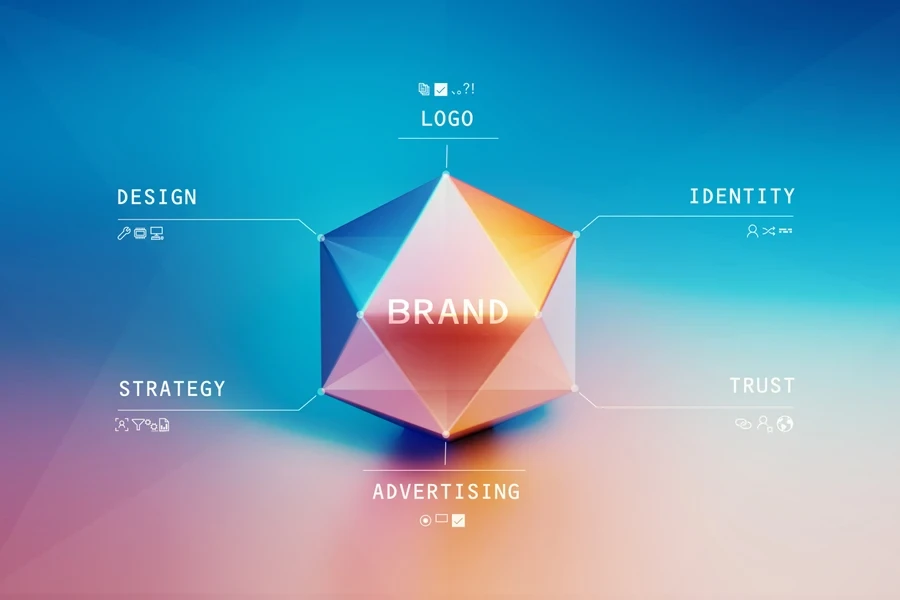Here’s a funny thing about business buzzwords: they get tossed around so much that, eventually, people stop thinking about what they mean. Take “marketing” and “advertising.” If businesses ask ten people what the difference is, they’ll probably get ten slightly different answers—or just blank stares.
Many learn this the hard way when they start their first side hustle. Imagine having a grand vision of running a small business with a website, a catchy logo, and an Instagram page that would have people clicking “Follow” faster than they could say “entrepreneur.” They may think they are doing marketing but may just be posting ads and crossing their fingers.
They may not realize that marketing and advertising are not the same thing. They’re related, sure, but they serve very different purposes. Understanding the key ways in which they differ, and the strengths and limits of each, can change everything for a business.
Table of Contents
What is marketing
What is advertising?
Breaking it down: The key differences
How they work together (because they absolutely should)
Final thoughts
What is marketing

Let’s start with marketing because it’s the starting point for everything. Marketing is a business’s strategy—the story they want to tell about their business and how they connect with their audience. It doesn’t focus only on pushing products but also on answering the big questions: “Who are you?” “What do you stand for?” “Who are you trying to reach?”
Here’s a great way to put it. Imagine a new entrepreneur opening a food truck. Before they even think about slapping a logo on the side or posting a picture of their signature food on Instagram, they must figure out the basics. Who are their customers? Are they office workers looking for a quick lunch? Weekend festival-goers? Late-night snackers? Marketing starts with understanding the audience so owners can shape their business around what they want.
But that’s not all. Marketing also goes beyond research to execution. It determines how businesses communicate their vibe. Use the food truck example: Are they a funky, colorful taco truck that screams fun? Or are they all about gourmet flavors and a touch of elegance? This identity comes through in the branding, website, menu design, and how owners interact with customers.
Here’s the kicker: marketing doesn’t end once people show up. It’s ongoing. It involves after-sales services, like a loyalty program that keeps them coming back, the email newsletter that updates them on new locations, and the quirky TikTok videos that give people a reason to follow the business.
What is advertising?

Advertising, on the other hand, is the more flashy aspect of running a business. It’s bold, direct, and all about grabbing attention. If marketing is the strategy, advertising is the tool brands use to execute parts of that strategy. It’s how they get people to notice them in a sea of competitors—and, hopefully, to take action.
Sticking with the food truck example, let’s say they’re planning a launch event. Advertising is the Facebook post that says, “Grand Opening This Saturday—Free Tacos for the First 50 Customers!” It can also be the flyer they stick up at local coffee shops or the Instagram ad they run targeting foodies in the area.
Here’s what makes advertising different from marketing: it’s short-term and results-driven. A good ad campaign gets clicks, drives sales, or gets people through the door. But without a solid marketing plan behind it, advertising can feel like shouting into the void.
Breaking it down: The key differences
Okay, so now that we’ve covered the basics, let’s look at the main differences between marketing and advertising:
1. Purpose

Although marketing and advertising aim to boost sales and profitability, they take different approaches. Here’s a quick look at each one’s purpose and goals:
Marketing
- Lead generation
- Customer retention
- Managing and creating upsell and cross-sell opportunities
- Tracking the results of all marketing initiatives
- New customer acquisition
- Maintaining consistent branding
- Product development
Advertising
- Building brand awareness
- Attracting first-time buyers to purchase
- Compelling customers to purchase through ads
- Keeping the brand’s image strong
- Motivating existing customers to make repeat purchases
- Increasing brand recognition
- Reminding customers about the brand
- Boosting brand loyalty
2. Techniques used

Since marketing and advertising have different objectives, it’s unsurprising that each relies on different approaches. Here’s what they use:
Marketing
- Inbound marketing: This is a completely organic way to attract more customers. It offers value while attracting more leads.
- Content marketing: This strategy attracts new eyes through content, including landing pages, social posts, blogs, and YouTube videos.
- Search engine optimization: Businesses can use this marketing technique to get higher ranks on Google, which means more visibility and traffic.
- Email marketing: This marketing technique is a great way for businesses to stay connected to their customers.
- Affiliate marketing: Working with the right affiliates can help businesses reach more consumers in exchange for a commission.
Advertising
- Traditional advertising (radio, TV, etc.)
- Digital advertising (social media ads, guest posting, video marketing, etc.)
- Billboard ads
- Retail advertising (in-store promotional material and shelf marketing)
- Native advertising
- Mobile in-app advertising
3. Success measurements

Every successful business keeps a close eye on what’s working and what’s not—it’s how they thrive in a competitive market. They refine and combine effective strategies, removing the ones that fail to reach an audience and helping these businesses maximize every dollar spent. Here are examples of different metrics to help track successful marketing and advertising:
Marketing
- Net promoter score
- Customer lifetime value
- Market share
- Customer retention
- Quarterly and annual sales revenue
Advertising
- ROAS (Return on Ad Spend)
- CTR (Click-through rates)
- Conversion rates
- Reach and impressions
- Engagement
4. Result Generation

How long does it take for each approach to deliver results? It’s another aspect that makes each one different. Since advertising is a marketing branch, it makes sense that it often produces quicker results and immediate returns. On the other hand, marketing efforts are more about laying the groundwork for long-term growth, focusing on building the brand’s future.
How they work together (because they absolutely should)
Marketing and advertising aren’t enemies. After all, one doesn’t work well without the other. For example, if a marketing strategy centers around sustainability (like using locally sourced ingredients and compostable packaging), advertising is how the business can amplify that message.
Marketing gives advertising its purpose, while advertising gives marketing its reach. But here’s a hard truth: advertising without marketing is like yelling into a crowded room without knowing who you’re talking to. The shouts might get some attention, but will it be from the right people? And will they care enough to stick around?
Final thoughts
Marketing and advertising are two sides of the same coin. Marketing is the groundwork—the vision, strategy, and connection to an audience. Advertising is the spotlight—how businesses share that vision with the world.
The secret? Use both wisely. Start with a strong marketing foundation, then let advertising amplify the efforts. With the right balance, owners will run a business and build a brand people care about.
So, the next time you plan a campaign, ask yourself: What story am I trying to tell, and who needs to hear it? The answer will guide everything else.





 Afrikaans
Afrikaans አማርኛ
አማርኛ العربية
العربية বাংলা
বাংলা Nederlands
Nederlands English
English Français
Français Deutsch
Deutsch हिन्दी
हिन्दी Bahasa Indonesia
Bahasa Indonesia Italiano
Italiano 日本語
日本語 한국어
한국어 Bahasa Melayu
Bahasa Melayu മലയാളം
മലയാളം پښتو
پښتو فارسی
فارسی Polski
Polski Português
Português Русский
Русский Español
Español Kiswahili
Kiswahili ไทย
ไทย Türkçe
Türkçe اردو
اردو Tiếng Việt
Tiếng Việt isiXhosa
isiXhosa Zulu
Zulu